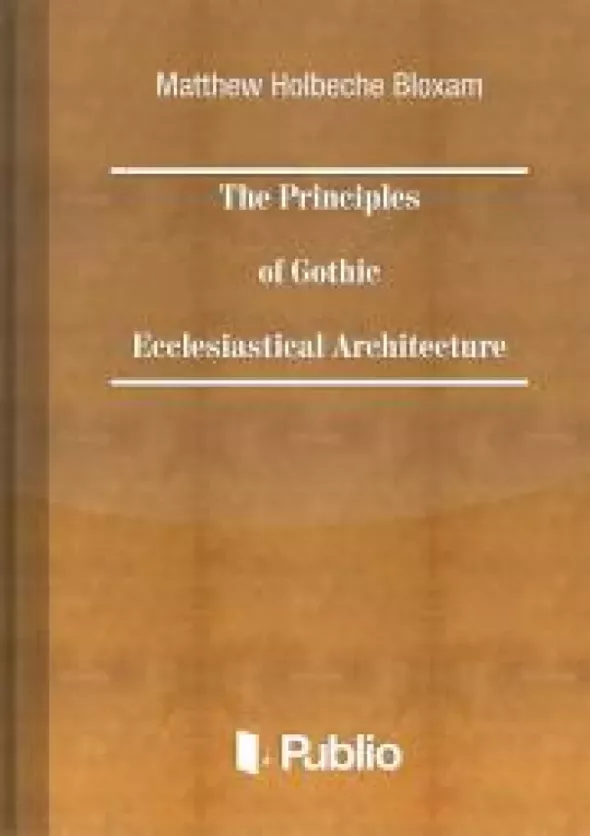
Q. What is meant by the term “Gothic Architecture”?
A. Without entering into the derivation of the word “Gothic,” it may suffice to state that it is an expression sometimes used to denote in one general term, and distinguish from the Antique, those peculiar modes or styles in which most of our ecclesiastical and many of our domestic edifices of the middle ages have been built.
Raktári kód:
180639
Oldalszám:
116
Szállítás:
Azonnal
Elérhető nálunk:
.ePub formátumban
Eredeti ár:
690 Ft
Adatok
Q. What is meant by the term “Gothic Architecture”?
A. Without entering into the derivation of the word “Gothic,” it may suffice to state that it is an expression sometimes used to denote in one general term, and distinguish from the Antique, those peculiar modes or styles in which most of our ecclesiastical and many of our domestic edifices of the middle ages have been built. In a more confined sense, it comprehends those styles only in which the pointed arch predominates, and it is then often used to distinguish such from the more ancient Anglo-Saxon and Norman styles.
Q. To what can the origin of this kind of architecture be traced?
A. To the classic orders in that state of degeneracy into which they had fallen in the age of Constantine, and afterwards; and as the Romans, on their voluntary abandonment of Britain in the fifth century, left many of their temples and public edifices remaining, together with some Christian churches, it was in rude imitation of the Roman structures of the fourth century that the most ancient of our Anglo-Saxon churches were constructed. This is apparent from an examination and comparison of such with the vestiges of Roman buildings we have existing.
A. Without entering into the derivation of the word “Gothic,” it may suffice to state that it is an expression sometimes used to denote in one general term, and distinguish from the Antique, those peculiar modes or styles in which most of our ecclesiastical and many of our domestic edifices of the middle ages have been built. In a more confined sense, it comprehends those styles only in which the pointed arch predominates, and it is then often used to distinguish such from the more ancient Anglo-Saxon and Norman styles.
Q. To what can the origin of this kind of architecture be traced?
A. To the classic orders in that state of degeneracy into which they had fallen in the age of Constantine, and afterwards; and as the Romans, on their voluntary abandonment of Britain in the fifth century, left many of their temples and public edifices remaining, together with some Christian churches, it was in rude imitation of the Roman structures of the fourth century that the most ancient of our Anglo-Saxon churches were constructed. This is apparent from an examination and comparison of such with the vestiges of Roman buildings we have existing.
Vélemények
Hírek